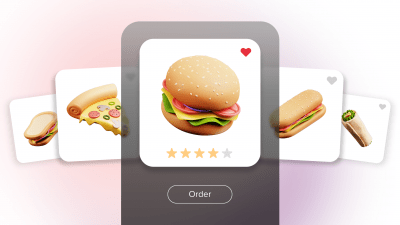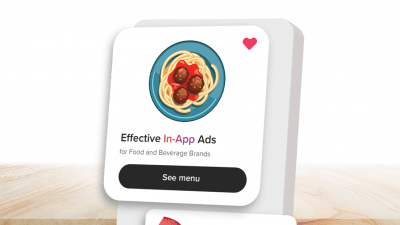Last Updated on: 14th February 2024, 12:39 pm
Creating an effective customer targeting strategy is a challenge that marketers have consistently faced over the years. A dynamically changing market, evolving consumer behavior and preferences, and the rapid development of new technologies are factors that constantly create challenges. On the one hand, they require a continuous modification of the assumptions and developed strategies, and on the other hand, they open up completely new possibilities – i.e. allow for a better and more effective reach of the target group with the message. Why is it worth diversifying strategies and reaching for both contextual and behavioral targeting? What will the cookieless future bring?
In this article you will learn:
- How contextual and behavioral targeting strategies work
- What challenges marketers face when selecting each of these strategies
- What the benefits of contextual targeting are
- How the cookieless future will affect targeting strategies
Table of Contents:
- How to understand contextual vs. behavioral targeting
- Behavioral vs. contextual targeting–what are the similarities?
- Behavioral vs. contextual targeting–where is the difference?
- What are the benefits of contextual targeting?
- How to excel at contextual targeting now and in the post-cookie era?
- The targeting method and tools that we use at RTB House
How to understand contextual vs. behavioral targeting
The idea of behavioral targeting is to segment your customers based on their past behavior – sites visited, links clicked or purchases made. On this basis, users are classified into specific segments, which are then targeted with personalized advertising. As a result, marketers can more effectively reach their target group with their advertising messages – moving away from ads addressed to the masses and directing them to a narrow group that has expressed interest in a brand, specific product, or topic in the past.
Another method of effectively reaching a specific group of recipients is contextual targeting. The principle of operation is very similar, but the point of focus is completely different. In contextual targeting the key issue is not the user’s past activities, but what they are doing here and now – what content they are currently viewing. If the user visits a website dedicated to renovation and construction, the marketing messages addressed to them will be related to the services and products of renovation and construction. It can be concluded that contextual targeting is an effective method of reaching the user with a potentially interesting message at the best possible moment.
Behavioral vs. contextual targeting–what are the similarities?
To create a winning marketing mix and properly select methods of targeting potential customers, you need to have a good understanding of the similarities, differences, and current challenges of each method. Let’s start with the elements that we can consider to be the common denominator of behavioral and contextual targeting.
Both behavioral and contextual targeting assume the use of some kind of intelligence, which makes them dynamic and extremely powerful tools in the hands of experienced marketers. The best solutions on the market use Deep Learning to enhance the accuracy of targeting, choose the most effective creations and even predict the propensity of a conversion – consider this while working on your marketing mix. Both methods – behavioral and contextual targeting – allow you to reach your target group more effectively than mass marketing or demographic targeting. A well-thought-out targeting strategy leads to more effective use of the marketing budget and the achievement of various goals.
What behavioral targeting and contextual targeting have in common is the fact that both strategies are not perfect. They don’t work in every situation, they have certain drawbacks, and they carry certain limitations and challenges that you need to be aware of when defining the optimal strategy for your business.
Good To Know: What is Contextual Targeting in Programmatic?
Behavioral vs. contextual targeting–where is the difference?
The main difference between contextual and behavioral targeting is the point of focus – in behavioral targeting you monitor the user’s online behavior, while in contextual targeting you monitor the content of the page they’re viewing.
Let’s start with behavioral targeting. Monitoring users’ online activities allows you to draw many accurate conclusions about their interests, desires or plans, but it also carries a high risk of error. To accurately assign a user to a particular segment, it is necessary to take information about their activity on many different devices they may use into account. The omission of any of them may strongly distort the proper characteristics of the customer and result in directing ads to them, which are not necessarily of interest to them.
Ad mismatches can also result from a particular user sharing a device with others. It is not uncommon for a laptop to be used by several household members. Is this a big problem in terms of targeting? It turns out that not necessarily, or at least it’s getting smaller with each passing year due to the growing importance of mobile. A study conducted by Statista in February 2022 shows that mobile devices are used by 90% of the global internet population. What is more, mobile internet traffic accounts for around 55% of total web traffic.
Focusing on historical data also carries the risk that the ad will reach the user too late. The fact that the user has browsed travel agencies’ offers and visited airlines’ websites does not mean they are still planning their vacations. The user may have already returned from their vacation, so targeting them with ads for suitcases or travel insurance will not bring the intended effect. When designing a targeting strategy, you should take this into account and think carefully about the look-back period and segmentation criteria. This is also one of the situations when it is also reasonable to use the opportunities offered by contextual targeting – knowing the segment to which the customer is assigned and knowing the context of the visited website, you can address a specific ad to them even more precisely. If a user has shown interest in vacation trips in the past and is currently visiting a travel advice site, they are probably still planning their trip, so the chances for conversion are still there. It’s up to you if you want to use behavioral targeting, contextual targeting or both at the same time – everything is doable so think about your goal, take the requirements into account and then choose the method that best suits your needs.
Contextual targeting seems to effectively address the shortcomings of behavioral targeting – it avoids the risk of ad mismatch, does not rely on cookies, and does not entail concerns about privacy or ad fatigue – the ad does not follow the user. Of course, this method is also far from perfect. Not everyone who visits an automotive blog has the intention of buying a car. Bearing the above in mind, you shouldn’t focus only on one targeting method and cross out other methods of reaching potential customers. The choice can’t be made in isolation from the goal of the campaign, its assumptions or the specificity of the business.
What are the benefits of contextual targeting?
Contextual targeting is a powerful strategy in digital advertising, offering a range of compelling advantages:
- Enhanced Relevance: It ensures that ads are displayed in alignment with the accompanying content and thus the user’s interests, thus boosting engagement and conversion rates.
- Brand Safety: Contextual targeting can minimize the risk of inappropriate or controversial ad placement. At RTB House, we use contextual segmentation to preserve a brand’s reputation and build trust.
- Efficient Ad Campaigns: This approach enables advertisers to reach the right audience within contexts where they are most receptive, resulting in a more efficient use of ad budgets and a higher ROI.
- Privacy-Conscious: Contextual targeting relies on minimal personal data, addressing privacy concerns and respecting user privacy.
- Real-Time Adaptation: It is adaptable in real-time, ensuring that ads remain relevant and effective in an ever-evolving online landscape. These combined benefits make contextual targeting a crucial tool for advertisers in delivering effective and user-friendly campaigns.
Read also: 3 Reasons to Focus on Contextual Targeting in Advertising
How to excel at contextual targeting now and in the post-cookie era?
Unlike other targeting methods that use cookies to track individual user behavior, contextual targeting allows advertisers to deliver ads based on the content a user is currently viewing. This is especially valuable in light of the impending demise of third-party cookies, increasing privacy concerns, and regulatory changes in the near future.
Here are some strategies to help you excel in contextual targeting, both now and in the evolving digital advertising landscape of the post-cookie era:
- Understand contextual relevance: Focus on understanding the context of the web pages where your ads will appear. Analyze keywords, topics, and themes to ensure your ads align with the content effectively.
- Content categorization: Group web pages into relevant content categories. This helps you ensure that your ads are displayed in contexts that are closely related to your offerings.
- Leverage technology: Use Deep Learning-powered tools to improve the accuracy of your contextual targeting. These technologies can analyze content more effectively and enhance your targeting capabilities.
- Data privacy compliance: Stay informed about privacy regulations and ensure that your contextual targeting practices comply with data protection laws in your target regions.
- Prepare for the post-cookie era: Recognize that contextual targeting will play a more prominent role in the post-cookie era. Keep up to date with the solutions under the Privacy Sandbox and consider how they can complement your strategies.
- Hybrid approaches: Explore hybrid approaches that combine contextual targeting with other methods, such as first-party data, to enhance targeting precision and personalization.
- Monitoring and analytics: Regularly monitor campaign performance and use analytics tools to gain insights into which contextual targeting strategies are most effective. Adjust your approach accordingly.
The targeting method and tools that we use at RTB House
You already know how both targeting methods work in practice, so now it’s time for you to find out how RTB House can help you reach your marketing goals. If you plan to use contextual targeting, you need to know that:
- We use ContentGPT, an innovative technology component that is set to revolutionize the way marketers understand and engage with online audiences. By leveraging the capabilities of Generative Pre-trained Transformers (GPT) and Large Language Models (LLMs), ContentGPT provides unparalleled insights into the specific interests and intents of webpage readers across the Open Internet,
- for the web environment we use our internal tool ContextAI which helps to better understand the context the user is browsing in real-time and, as a result, allows us to reach the right audience in the right environment to maximize ad impact.
We support all targeting methods available on the market, so you don’t have to worry about anything. Tell us what your business goals are, and we will recommend the best method to support your goals and aspirations.
The behavioral campaigns we support are based on site behavior or banner interaction such as impression, click or complete view. It’s an effective advertisement method that can help you fight to get your ex-shoppers or ex-visitors back. How? Your best customers will be targeted with ads that remind them about your brand or show products selected based on their preferences and shopping habits.
Wondering how the cookieless future will affect targeting effectiveness? To what extent will what you have achieved be lost? Contextual targeting is not cookie-based, so think about taking this method into account and including it in your strategy. We talked to Catalina Balan, Data & Technology Director at Publicis Groupe, about how the move away from 3rd Party Cookies will change targeting methods. Also check out insights from an RTB House roundtable regarding the cookieless future.
Do you have any additional questions? Our experts will be happy to answer them and suggest an optimal solution. Contact us.





